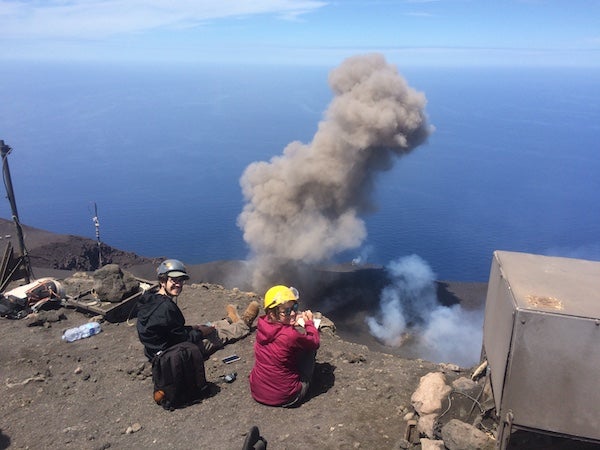
Associate Professor Jeffrey Johnson of the Department of Geosciences studies volcanoes using infrasound. These intense volcano sounds are below the frequency limit of human perception, but can be recorded with specialized microphones that are built at Boise State University. Johnson’s work takes him and his students to volcanoes to record, analyze, and interpret how these low frequency sound waves relate to eruption dynamics.
Johnson’s recent article published in the American Geophysical Union’s Earth and Space News publication Eos (https://eos.org/project-updates/monitoring-volcanic-craters-with-infrasound-music) explains the importance of monitoring infrasound from volcanoes. In one of the featured studies he and his co-authors monitored the level of a rising lava lake at a Chilean Volcano just prior to a large eruption. In another study, the sound waves produced by an Ecuadorian volcano were used to estimate the dimensions of a volcanic crater whose floor was obscured by fume. NPR’s Science Friday program featured this work in a radio interview in January, 2019. (https://www.sciencefriday.com/segments/the-silent-tremors-of-volcanoes-caught-on-mic/).
Infrasound is recognized as an important developing field in volcano science. The National Science Foundation recently funded Johnson’s ongoing work, “The Volcano acoustic source: decoupling crater modulation from infrasound signal.”
This three-year grant is supporting novel scientific discovery and the training of two new geophysics graduate students, Kristina Rossavik and Bryan Rosenblatt. In May, both students traveled to Italy with Johnson collecting new data at the active Stromboli Volcano. They helped Johnson deploy infrasonic microphones and seismometers to record and better understand the small explosions that occur several times each hour at Stromboli.